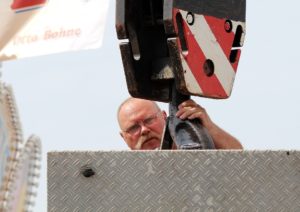What You Need to Know About the GRIDS
If there’s one thing the government loves to do it’s making a standardized process. Some of these processes work and some don’t, but that doesn’t stop new standardize processes from popping up everyday.
One standardized process the government created for the SSA, is the medical-vocational guidelines, commonly known as the GRIDS. This system was created to have a standardized process that can be used for anyone at anytime. Basically, the SSA wants to be able to apply the same rules to everyone without having to make case by case decisions.
The GRIDS system doesn’t apply to medical diagnosis, it’s meant more for assessing the applicant’s work related skills, work history, age, and education. This doesn’t apply to mental disabilities or for non-specific pain (pain that isn’t caused by lifting, standing or sitting), it’s only for physical disabilities that limit your ability to work and are not found in the SSA’s medical impairments listings.
You’re probably asking yourself, “why is it called the GRIDS?” The answer is simple, the system uses a 4 column grid to decide if the applicant is disabled or not. This grid shows the SSA how likely you are to find suitable work, based on certain factors.
These factors include your:
Each of these factors has their own unique complexities that you need to understand. Here’s a closer look at each factor.
Age
There’s not a lot of wiggle room when it comes to your age. The SSA basically just looks at your driver’s license and moves on. The reason the SSA checks your age is because they feel that older people (50+) are less likely to find work. Younger people can adapt and learn new skills more easily than older people. This is why applicants under the age of 50 have a harder time getting approved.
 Age groups include:
Age groups include:
· Younger Individual: 18-49
· Close Approaching Advanced Age: 50-54
· Advanced Age: 55-59
· Closely Approaching Retirement Age: 60 through Retirement Age
RFC
A residual functional capacity (RFC) is an assessment designed to see what level of work you can handle. There are six levels the RFC can assign you:
 Very heavy
Very heavy
A sedentary level means you are can only do work that involves sitting, lifting light objects (10 pounds or less). Very heavy means you can lift 100 pounds frequently and carry 50 pound objects.
Education
The less education you have, the harder it is to find a job, which is why the SSA doesn’t approve a lot of highly educated people. There are four categories the SSA uses to classify education levels.
- Marginal Education: 6th Grade and Below
- Limited Education: 7th to 11th Grade
Work Skills
When the SSA looks at your past work skills, they look at two kinds of skills: previous work experience and transferable skills. Skills from previous work experience are relevant skills that you learned from past jobs you’ve had. The SSA will classify these skills using three categories, unskilled, semi-skilled, and skilled. These classifications are based on the Department of Labor’s job and work classifications. Here’s what each one refers to.
- Unskilled- Work that doesn’t require decision making skills. Usually simple jobs that can be learned in less than a month.
- Semi-skilled– Requires some skills and decision making, typically to avoid risks. These kinds of jobs can be repetitive in nature and might require hand eye coordination to quickly complete tasks. Around three to six months are required to learn this work.
- Skilled- Independent decision making, specific skills, and interpolation are all required for skilled work. It takes a minimum of six months to learn this kind of work, and could take up to a few years to truly master.
 Transferable skills are the kind of skills that you might have learned in your previous jobs, that you can transfer to a new jobs. This includes more general skills that can be applied to multiple tasks with a few tweaks. For instance, if you managed a landscaping crew, you might be able to transfer those management skills and manage a team at a manufacturing facility.
Transferable skills are the kind of skills that you might have learned in your previous jobs, that you can transfer to a new jobs. This includes more general skills that can be applied to multiple tasks with a few tweaks. For instance, if you managed a landscaping crew, you might be able to transfer those management skills and manage a team at a manufacturing facility.
Some factors, like your age, are easy to calculate and others are a bit trickier. This is where some grey area comes into play. The SSA has to decide where these factors rank before they put you in the grid, and because there’s isn’t an exact system to do that, debates can happen.
For instance, the SSA might say that you have multiple skills that can transfer from your previous job, but you might argue that your disability takes away these skills and gives you no transferable skills. This kind of decision will have a huge impact on where you fall in the GRIDS.
How the GRIDS Works
Now that you understand all the factors the GRIDS system uses, let’s take a look at how it all works. There are actually multiple GRIDS charts, one for each type of RFC work levels. The first thing to do is find the chart that fits your RFC work level.
Then you’ll need to locate your age group. Once you’ve found the right age group, look for the education level that best describes your situation. Next, look at the column to the right to find the appropriate level of work experience. After you do that, your decision will be in the column to the right. Here’s an example chart for a sedentary work level. We only included individuals who are of Advanced Age for this example.

Note: “do” means ditto.
The GRIDS system is challenging to understand, but with the help of a Social Security disability lawyer you can navigate the GRIDS system like a pro. The SSA created this system to make things simple and easy, and eliminate judgement calls. While the GRIDS system helps the final decision making process, there’s still some room for miscalculation when the individual factors are being determined.
Far too often applicants are short-changed by the SSA when it comes to their RFC or work experience. Jan Dils Attorneys at Law is here to ensure our clients get a fair judgement every time.
 Free Case Consultation
Free Case Consultation  Free Case Consultation
Free Case Consultation 






